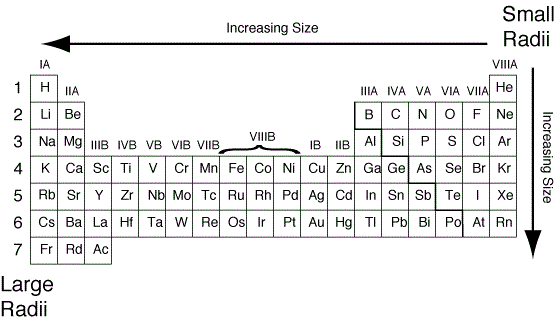

Therefore, there are various non-equivalent definitions of atomic radius. 2.2.2 Effect Due to Differences in Atomic Radius.
#FE ATOMIC RADIUS FREE#
However, this assumes the atom to exhibit a spherical shape, which is only obeyed for atoms in vacuum or free space. Having decided upon atomic sizes of pure elements, which is the best method of estimating the influence. It is not found in nature as a free element. The atomic radius of a chemical element is a measure of the distance out to which the electron cloud extends from the nucleus. APF APF is the fraction of solid sphere volume in unit cell. If the density, atomic weight, and atomic radius are 7.30 g/cm3, 118.69 g/mol, and 0.151 nm, respectively, compute the atomic packing factor. Dysprosium is found in various minerals including bastnäsite, blomstrandine, euxenite, fergusonite, gadolinite, monazite, polycrase and xenotime. The unit cell for tin has tetragonal symmetry, with a and b lattice parameters of 0.583 and 0.318 nm, respectively.
#FE ATOMIC RADIUS SERIES#
It is a member of the lanthanide or rare earth series of elements and, along with holmium, has the highest magnetic strength of all other elements on the periodic table, especially at low temperatures. In its elemental form, dysprosium has a silvery-white appearance. Dysprosium was first discovered by Paul Emile Lecoq de Boisbaudran in 1886. The dysprosium atom has an atomic radius of 178 pm and a Van der Waals radius of 229 pm. The number of electrons in each of dysprosium's shells is and its electron configuration is 4f 10 6s 2. Dysprosium (atomic symbol: Dy, atomic number: 66) is a Block F, Group 3, Period 6 element with an atomic radius of 162.5. but moves to the Fe-Fe bridge center because of the large difference of atomic radius between V and Fe.


 0 kommentar(er)
0 kommentar(er)
